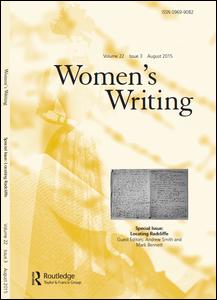
Women's Writing
Volume 18, Issue 2, May 2011
Pages 167-181
- DOI: 10.1080/09699082.2011.553264
- Print ISSN: 0969-9082
- Online ISSN: 1747-5848
FRANCES TROLLOPE'S ONE FAULT AND THE EVOLUTION OF THE NOVEL
This article positions Frances Trollope's One Fault (1840) between Jane Austen's Pride and Prejudice (1813) and Anthony Trollope's He Knew He Was Right (1869). All three novels depict a marriage between a man who is significantly wealthier and of higher social status than the woman he chooses for love. As a sequence, the three show the gradual erosion of the husband's power. In the novels by Frances and Anthony Trollope, this portrait of a failure of marital power becomes a means of representing in fiction the challenges to social authority that were perceived to have been brought about by the legislative reforms of the nineteenth century. One Fault references the passage of the Reform Act in 1832, He Knew He Was Right that of the Second Reform Act in 1867. Comparing these two novels reveals changes in the perceived structure of marriage and of the relation between the classes that took place between the 1830s and '40s and the 1860s. The novel accommodated itself to these social forms by developing new conceptions of character and a new plot structure. These formal inventions allow the Trollopes to represent social and personal authority as dispersed over a range of positions rather than concentrated in a single place, the space typically represented by the husband as the emblem of patriarchal values.